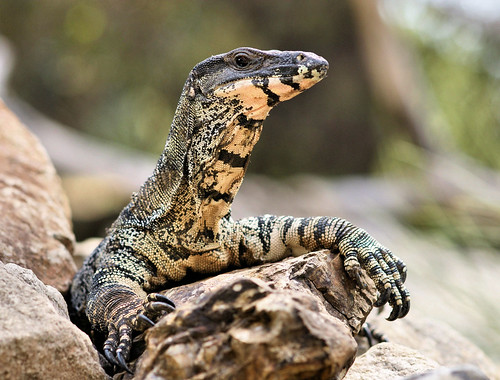Post by Reticulatus on Feb 23, 2014 21:59:56 GMT 5
Dingo-Canis lupus dingo

Domestic and pariah dogs in southern Asia share so many characteristics with Australian dingoes that they are now considered to be members of the same taxon Canis lupus dingo, a particular subspecies of Canis lupus. While the relationship with humans varies widely among these animals, they are all quite similar in terms of physical features.
A dingo has a relatively broad head, a pointed muzzle and erect ears. Eye colour varies from yellow over orange to brown. Compared to other similarly sized familiaris dogs, dingoes have longer muzzles, larger carnassials (large teeth found in many carnivorous mammals), longer canine teeth, and flatter skulls with larger nuchal lines.
The average Australian dingo is 52 to 60 cm (20 to 24 in) tall at the shoulders and measures 117 to 154 cm (46 to 61 in) from nose to tail tip. The average weight is 13 to 20 kg (29 to 44 lb); however, there are a few records of outsized dingoes weighing up to 27 to 35 kg (60 to 77 lb). Males are typically larger and heavier than females of the same age. Dingoes from northern and northwestern Australia are larger than central and southern populations. Australian dingoes are invariably heavier than Asian ones. The legs are about half the length of the body and the head put together. The hind feet make up a third of the hind legs and have no dewclaws. Dingoes can have sabre-form tails (typically carried erect with a curve towards the back) or tails carried directly on the back.
The fur of an adult dingo is short and soft, bushy on the tail, and varies in thickness and length depending on the climate. The fur colour is mostly sandy to reddish brown, but can include tan patterns and sometimes be black, light brown, or white. Completely black dingoes might have been more prevalent in Australia in the past, but have only been rarely sighted in recent times. They are now more common in Asia.
Most dingoes are at least bi-coloured, with small, white markings on the chest, muzzle, tag, legs and paws being the most common feature. In the case of reddish individuals, there can be small, distinctive, dark stripes on the shoulders. All other colours and colour-patterns belong to hybrids having been crossbred with domestic dogs.
Scrub Python-Morelia amethistina

Specimens have reportedly been measured at more than 8.5 m (28 ft) in total length, but this is exceptional, as 5 m (16 ft) specimens are already considered large. As is typical for very large constricting snakes, almost no verified specimens of this species have exceeded 6 m (20 ft). However, in 1990, while conducting a herpetological survey, Tom Mendelson collected a wild female specimen on Biak Island, far Eastern Indonesia, which measured 22 feet 7 inches. Another huge female, in a report considered reliable, was measured by S. Dean in 1954 as 7.2 m (24 ft). A typical adult specimen will measure around 2 to 4 m (6.6 to 13.1 ft). Females typically weigh around 15 kg (33 lb). Some exceptional specimens have been confirmed to weigh over 30 kg (66 lb) and unconfirmed outsized specimens have been reported to scale 90 kg (200 lb), although no specimen of this enormous size has been authenticated. Males are much smaller and slimmer, averaging at 5.1 kg (11 lb) in mass at maturity, and occasionally weighing upwards of 11 kg (24 lb). The body is relatively slim, unlike those of many other large members of this family.
The specific name, amethistina, is an allusion to the milky iridescent sheen on its scales, which gives it an amethyst-like color.
The smooth dorsal scales are arranged in 39-53 rows at midbody. There are deep pits on 6 or 7 of the posterior lower labials.[9]


















